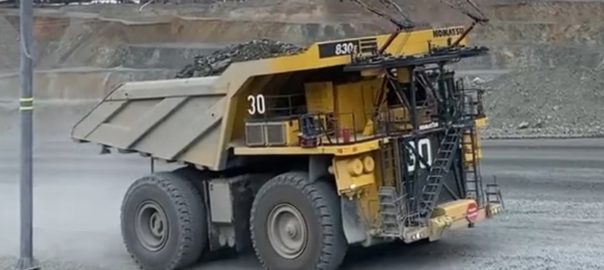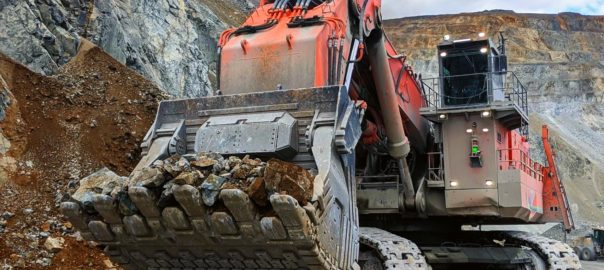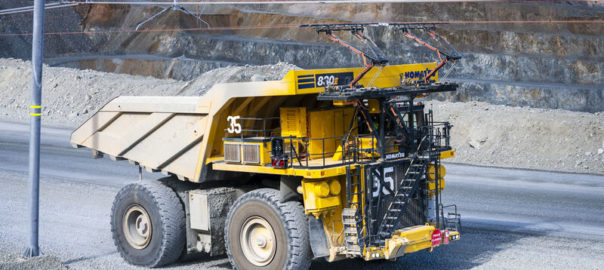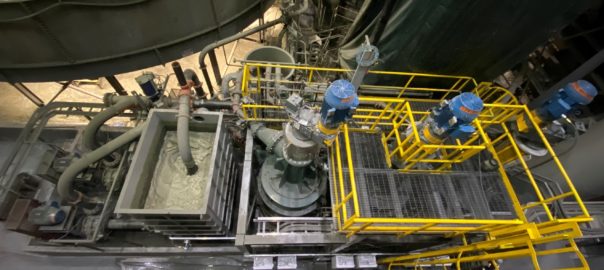Uninterrupted connectivity is critical for maintaining safety and productivity at Copper Mountain’s mine site in southern British Columbia, Canada, with a Rajant-Redline network solution recently passing the test during a scheduled power outage.
Without a high degree of uptime, vehicles on the mine lose their connection to the control room and critical data – like vehicle location and the weight of vehicle loads – cannot be received.
In the winter of 2023, that worst-case scenario nearly came to pass. Less than a week after Tridon, Rajant’s technology partner in the region, commissioned a Rajant-Redline network solution, crews at the mine intentionally cut power to a building where one of the main backhaul clusters was located due to the need to mitigate an unrelated explosion hazard. This power outage caused all four point-to-multipoint master radios at this hub site to be powered off, triggering an immediate alert to Tridon’s Network Operations Centre (NOC) of a potential communications outage.
From the outset, the challenge was designing a network that could provide Copper Mountain with the kind of reliability they needed – 99.999% annual uptime. Given the sometimes-brutal nature of British Columbia Canada’s weather, the network had to be highly robust and ruggedised. It had to be nomadic and adaptive to change, given the constantly evolving terrain of an active mine. Finally, the network had to be flexible to adapt to unexpected events, like a power outage, without breaking down.
A competitive solution was initially considered to support the network but was soundly rejected due to multiple compatibility issues. Instead, Tridon’s engineers designed a hybrid technology solution that would deliver what Copper Mountain needed.
Based on engineered propagation studies, 19 portable trailers are strategically placed around Copper Mountain for optimal coverage. Mine vehicles connect via an existing on-board client radio to the 2.4 GHz radio within the Rajant Hawk BreadCrumb of the best serving trailer. If the trailer handling the client traffic is in a location with line-of-sight to one of the hub sites (via a Redline PtMP RAS-ELTE radio), then the traffic is forwarded directly to the hub site over the Redline backbone. If the trailer does not have a viable PtMP link through the Redline backbone, traffic is forwarded over the lowest-cost mesh link via the 5.8GHz radio within the Rajant Hawk BreadCrumb.
If a trailer is ever moved to a different location, the Redline RAS ELTE radio will automatically scan for a viable PtMP link back to the hub sites, and the Rajant Hawk will continue to mesh with other BreadCrumbs on trailers in the area.
“Foresight, expert engineering, and top-drawer technology resulted in a network that essentially self-healed,” Rajant says. “Tridon’s NOC reported the power outage to the client, who, in turn, reported that operations were carrying on as usual.”
There was no traffic loss from the operational mine network and no indication from the Copper Mountain control room operators that the core network infrastructure was degraded in any way. They did not see a network outage due to the hybrid, multi-layered, self-healing nature of the network design.
This allowed Copper Mountain to continue operating at total network capacity even after losing half of the core central infrastructure by engineering a solution that seamlessly integrates multiple technologies to achieve an extraordinarily reliable and redundant network, Rajant says. After power was restored, the affected radios on site powered back on and automatically re-associated back into the network without manual intervention.
Rajant concluded: “Innovative communications technology, paired with an equally innovative system design by Tridon’s engineers, resulted in a network that performed exactly as it was designed to. To put it simply, the solution just worked and continues to do so today.”










